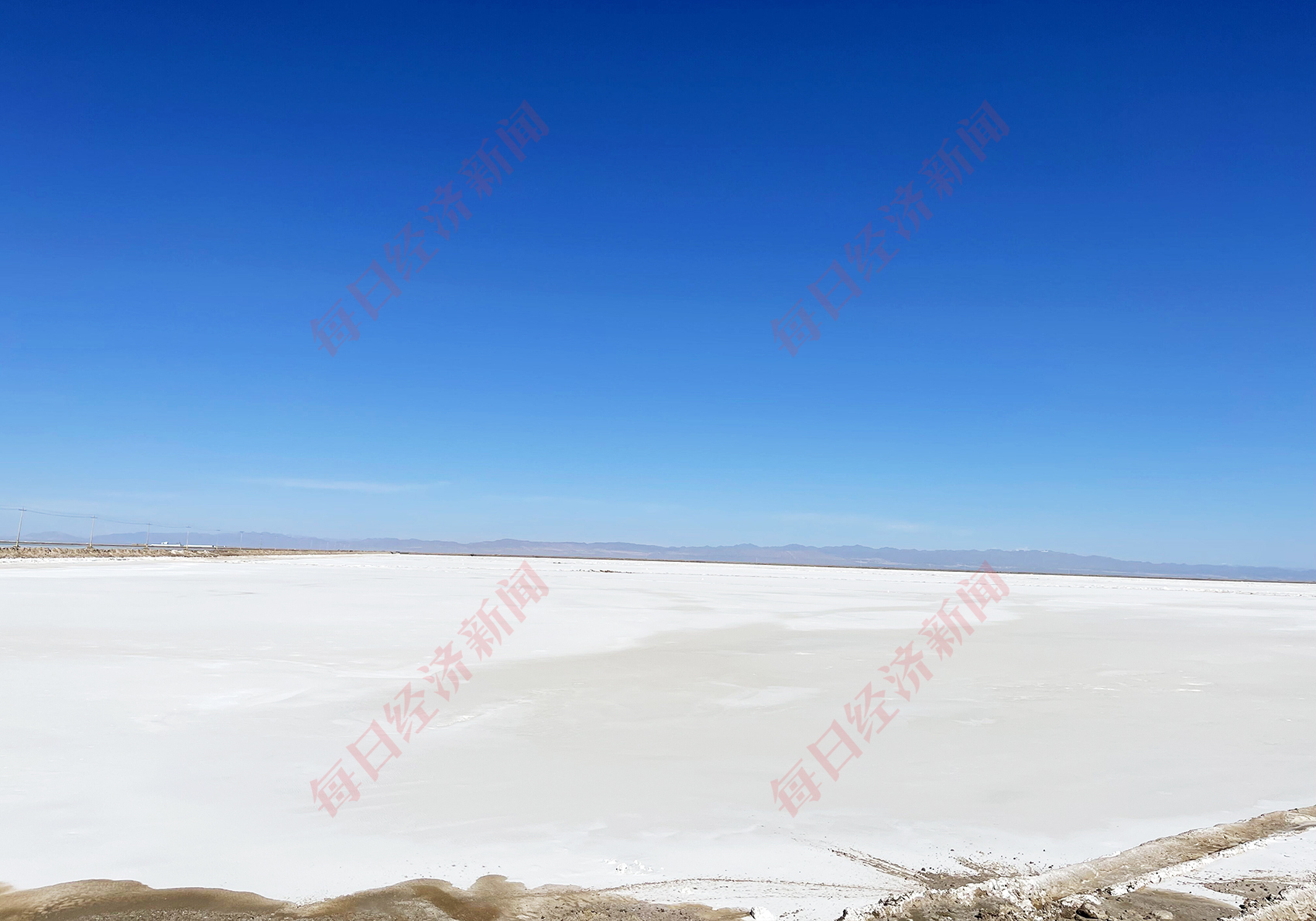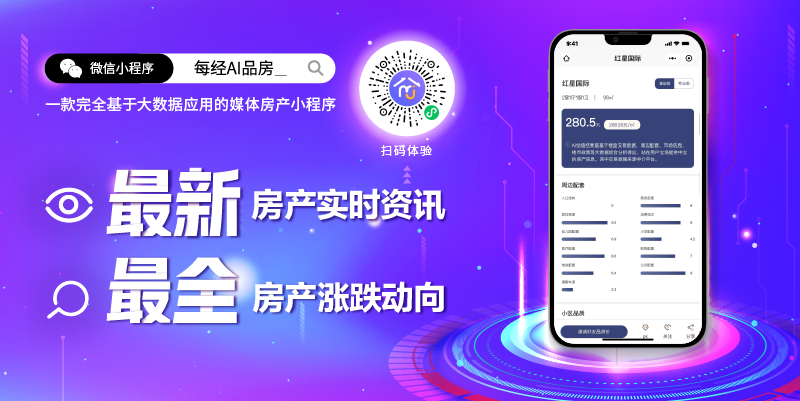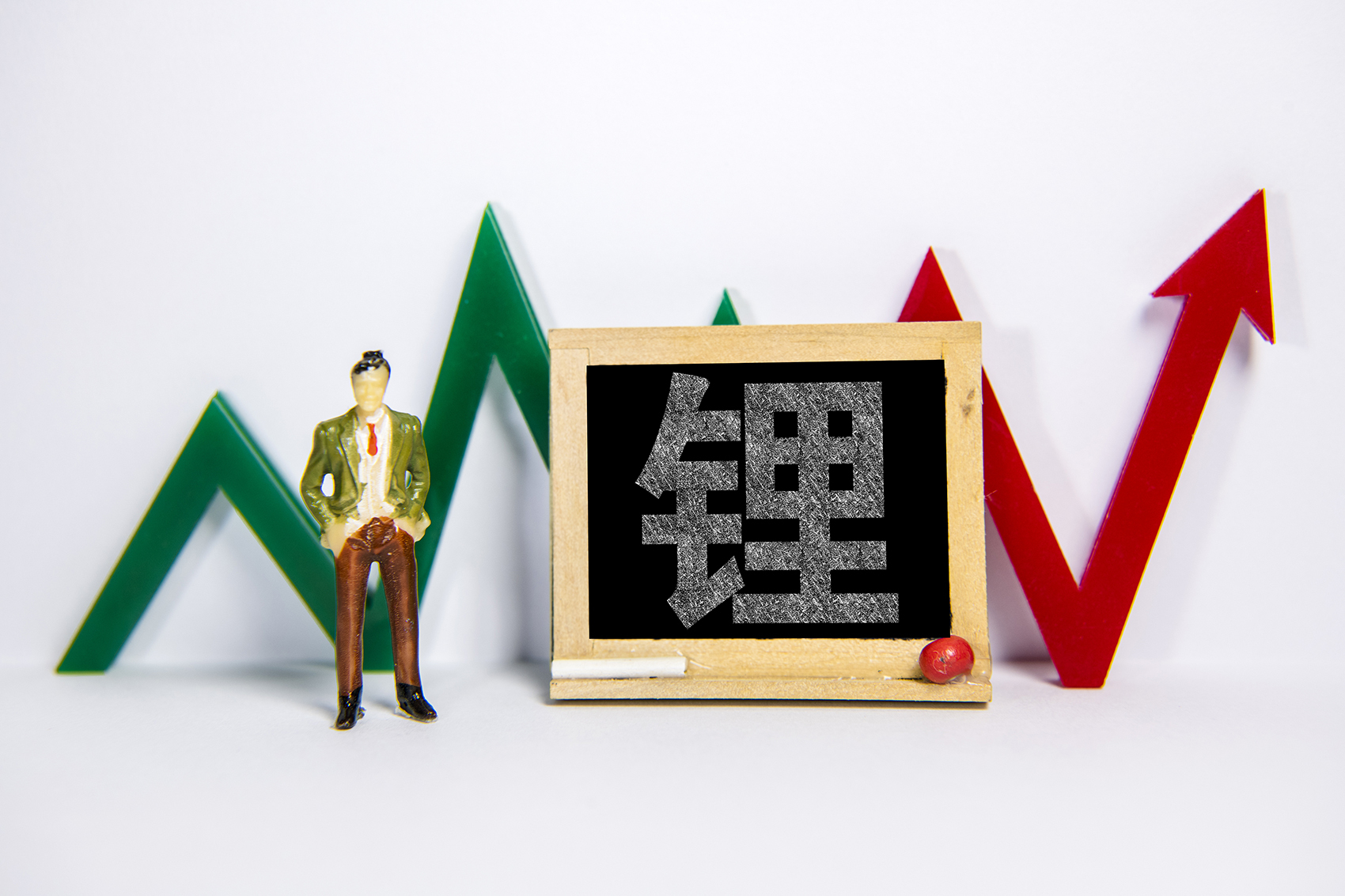Every reporter Zhu Chengxiang Huang Xinlei An Yufei Every editor Zhang Haini
Image source: Visual China
On the evening of March 17, there were long queues at gas stations in many places. At 24:00 that night, a new round of refined oil price adjustment is approaching. Oil prices are getting more and more expensive, will it be more cost-effective to buy new energy vehicles?
Tesla’s answer is that it has raised prices three times within 8 days. On March 10, March 15, and March 17, Tesla China’s official website continuously adjusted the prices of its Model 3 and Model Y models.
The reason for Tesla’s price increase is largely due to the increase in the price of upstream raw materials. Especially lithium carbonate, in early March, the price of battery-grade lithium carbonate exceeded 500,000 yuan / ton. A year ago, the price of battery-grade lithium carbonate was less than 90,000 yuan per ton, an increase of more than 5 times a year.

Data source: Wind, Antaike
There are many new entrants, and the demand is growing rapidly
Why is the price of lithium carbonate rising so fast? “The core is still the imbalance between supply and demand.” Many industry insiders and analysts hold similar views.
Across the country, the expansion of new energy batteries and midstream material factories is in full swing. Recently, Longbai Group has built a production capacity of 50,000 tons of lithium iron phosphate.
At noon on March 17, Longbai Group announced that in February 2022, the lithium iron phosphate production line with an annual output of 50,000 tons has entered the trial production stage. In the trial production stage, through multiple staged equipment debugging and material trial run, the product quality inspection has passed and the qualification approval of some downstream customers has been obtained. It is now ready for production.
50,000 tons of lithium iron phosphate cathode can supply more than 400,000 new energy vehicles. You know, the national sales of new energy vehicles in 2021 will be 2.446 million.
According to the Shanxi Securities Research Report, the cathode material of the 1GWh lithium iron phosphate battery is 2,300 tons of lithium iron phosphate. Based on this calculation, 50,000 tons of lithium iron phosphate can produce 21.74GWh. According to data from SNE Research, a South Korean market research institution, the global sales of new energy vehicles from 2019 to 2021 will be 2.21 million, 3.24 million and 6.5 million respectively, and the installed capacity of power batteries will be 115.21GWh, 146.7GWh and 296.8GWh, respectively. That is, the corresponding sales volume of each GWh vehicle is 19,100, 22,100 and 21,900 respectively. Therefore, based on a conservative calculation of producing 20,000 vehicles per GWh, 50,000 tons of lithium iron phosphate batteries can produce about 434,800 vehicles.
And 50,000 tons is only the first phase planned by Longbai Group. If the project is completed, Longbai Group will have a production capacity of 200,000 tons of lithium iron phosphate, corresponding to 86.96GWh and 1,739,100 vehicles. According to the data of China Automotive Power Battery Industry Innovation Alliance, the installed capacity of lithium iron phosphate batteries in 2021 will be 79.84GWh.
You know, Longbai Group did not produce lithium iron phosphate cathodes before, it was a titanium dioxide manufacturer. In fact, traditional chemical companies like Longbai Group are racing to enter the lithium iron phosphate cathode industry.
The main materials for the production of lithium iron phosphate cathodes are iron phosphate and lithium carbonate.
Regarding the skyrocketing price of lithium carbonate, Zhonglian Gold Cobalt Lithium analyst Sheng Yitang told the “Daily Economic News” reporter: “The most important thing is the mismatch between supply and demand in the current market expansion cycle, as well as the shortage of medium and long-term raw material supply. Lithium salt Smelters, cathode material manufacturers and battery factories all have capacity expansion plans, and new production lines continue to be implemented, and the expansion cycle ranges from six months to two years, but the growth rate of raw material supply is far less than that of demand expansion.”
crazy expansion
As Sheng Yitang said, midstream lithium salt smelters, cathode material manufacturers and downstream lithium battery factories are all in the midst of frantically expanding production capacity. Especially in cathode materials and batteries, new forces are constantly entering.
For example, Longbai Group signed a strategic cooperation framework agreement with Tianjin Gateway Power Industry Co., Ltd. (hereinafter referred to as Gateway Power) on March 7. Gateway Power is not a top lithium battery manufacturer in China, but it is also actively expanding its production capacity. According to its official website, the company has five production bases in Tianjin, Jiaxing, Yancheng, Changxing and Chuzhou. The total investment of the Chuzhou production base has reached about 10 billion yuan, and the planned production capacity is 20GWh. It is planned to be put into use before the end of 2023. By 2025, Gateway Power plans to have a total production capacity of 100GWh.
It should be noted that, according to SNE Research data, the installed capacity of CATL in 2021 is only 96.7GWh.
New forces are entering, and traditional tyrants are also expanding wildly. According to the statistics of high-tech lithium batteries, the total investment in capacity planning projects of domestic power battery enterprises in 2021 will exceed 620 billion yuan.
In 2021, battery companies such as CATL, BYD, China Innovation Aviation, Honeycomb Energy, and Yiwei Lithium Energy have announced multiple production expansion plans. Yingda Securities Research Report predicts that the total production capacity of the top 10 domestic power battery companies in 2021 will exceed 3TWh by 2025. Among them, CATL, BYD, Honeycomb Energy, AVIC Lithium Power, Guoxuan Hi-Tech, Yiwei Lithium Energy, Lishen Battery, and Funeng Technology’s 2025 capacity targets are 670GWh, 600GWh, 600GWh, 500GWh, 300GWh, 200GWh, 100GWh and 100GWh, respectively. , the total production capacity target is 3070GWh.

In 2021, the global installed capacity of power batteries will be 296.8GWh, and the cumulative installed capacity of domestic power batteries will be 154.5GWh. This means that the production capacity target of 3TWh will be 10 times the global power battery installation in 2021 and nearly 20 times the domestic installation.
New entrants who continue to enter the industry, cathode material manufacturers and battery manufacturers continue to expand. Is such expansion rational?
Zhao Bin, a battery industry analyst at the Head Leopard Research Institute, believes: “The lithium battery industry is highly concentrated, and the head cathode material factory and battery factory have formed a stable upstream and downstream cooperative relationship, and there are long-term orders. The expansion plan of the factory comes from the response to terminal demand, not blind expansion. Behind the aggressive expansion plan is the continued optimism about the global new energy vehicle market demand from 2022 to 2025, and the start of new energy vehicles in 2022. It also confirmed this expectation.”
Can the midstream and downstream be able to withstand such a high lithium price?
“The development of China’s new energy vehicle market in 2021 will far exceed expectations. Whether it is lithium iron phosphate battery or ternary lithium battery, lithium resources are its most important raw materials.” Zhao Bin told the “Daily Economic News” reporter.
It can be seen that the rise in lithium prices is gradually transmitted from the downstream. The activities of the new energy vehicle market have driven the expansion of power battery manufacturers, thereby driving the expansion of cathode material manufacturers and the expansion of lithium salt manufacturers. Before 2021, the upstream is in a trough period, and a large number of mines and salt lakes have stopped production.

The brine drawn from the Chaerhan Salt Lake. Image source: Every photo by reporter Xu Shuai (data map)
Zhao Bin said: “Before 2021, the prices of lithium carbonate and lithium hydroxide continued to decline, and even only about 40,000 yuan per ton. A large number of mines and salt lakes were shut down, and the original expansion plan was postponed. The surge in downstream resources obviously exceeded mines. Due to the original mining expectations at the end, it will take a certain amount of time to restore production capacity and increase the production capacity of new production lines. In addition, due to the impact of the epidemic, Australia and South America have insufficient manpower for resource mining, production capacity is not up to expectations, and the demand gap will not be alleviated for a long time. This imbalance of supply and demand has caused The continued strengthening of lithium prices in the second half of 2021.”
“(At) the current price level of lithium carbonate, cathode material companies will lose money in production.” Mo Ke, chief analyst of True Lithium Research, pointed out.
So, what should cathode material manufacturers do in the face of soaring lithium carbonate prices? Mo Ke believes: “There are not many ways that cathode material companies can take. Procurement of raw materials in advance is one way. At present, under the circumstance that resource prices continue to rise, what cathode material companies earn is a price difference of raw material inventory. From a certain perspective , Now the competition of cathode material companies is financial strength. Rich companies hoard more raw materials and make money from time lag. “
During the Spring Festival, mid-stream and downstream manufacturers have stockpiled and even robbed them. Sheng Yitang also mentioned: “Due to the outage of logistics during the Spring Festival holiday, the uncertain factors brought about by the epidemic, and the continuous high-level multi-factors of the follow-up price, the anxiety of middle and downstream manufacturers in purchasing and supplying has increased. Before and after the Spring Festival holiday , The mood of rushing and hoarding goods in the middle and lower reaches is serious, and manufacturers basically rely on rushing to receive goods. From the beginning of January to the end of the Spring Festival holiday in February, in just over a month, the spot of electric carbon (battery-grade lithium carbonate) has increased from 300,000/ton to 40,000/ton. 10,000/ton, and the unit price soared by 100,000.”
“Midstream manufacturers can rely on pre-stocking to ensure short-term production, which is also one of the reasons why they can maintain a wait-and-see on lithium salt prices and turn down their purchases.” Sheng Yitang added.
The response of cathode material manufacturers and battery manufacturers also proves this. The staff of Longpan Technology, a listed cathode material company, told the “Daily Economic News” reporter: “At present, the process of lithium carbonate is still very tight, but there is no problem with our (raw material) supply. On the one hand, part of our demand in 2022 has been signed. The other part is being purchased just in time, and we also keep the inventory needed for nearly a month of production.”
In terms of battery manufacturers, Funeng Technology replied to the reporter of “Daily Economic News”: “Funeng Technology insists on establishing mutual trust and win-win cooperation with raw material companies to jointly maintain and promote the healthy development of the industry. For example, at the end of last year, the company and Huayou Cobalt The strategic cooperation agreement signed by the industry includes the purchase of 161,500 tons of ternary precursors.”
In addition to long orders and stockpiling, another option for midstream cathode material factories and battery factories is to transmit prices to terminal car factories and increase prices downstream.
The cost of bicycle materials has increased by more than 30,000 yuan year-on-year, which is the price increase of lithium iron phosphate new energy vehicles with a battery life of 600 kilometers. According to a research report released by Shanxi Securities on March 9, the total price of the main raw materials for lithium iron phosphate batteries per 1GWh was 659 million yuan, an increase of 9.94% month-on-month and 158.68% year-on-year. Among the various materials, the lithium iron phosphate cathode has the highest increase, with an increase of 238.14%. Among them, the price difference of the 600-kilometer lithium iron phosphate cathode bicycle is 20,200 yuan.
In terms of ternary batteries, the price difference of NCM811 with a range of 600 kilometers per 1GWh of ternary material cathode bicycles is 25,800 yuan.
Regarding price transmission, the staff of Longpan Technology said: “The price of lithium carbonate has exceeded 500,000 / ton. Such a trend has put a lot of pressure on the downstream, including OEMs and battery factories. It is difficult to say whether this price can be maintained. So far, it has not affected the company. At present, the company can fully pass on the pressure of price increase, and the sales price of lithium iron phosphate has reached 160,000 yuan / ton. “
Where will lithium prices go in the future?
Is the price of 500,000 yuan/ton of lithium carbonate reasonable? What is the future trend?
At present, the upstream supply is still tight. Sheng Yitang believes: “It is difficult to ship a large number of salt lakes after the winter. After entering April and May, as the temperature rises, the shipments of Qinghai Salt Lake will steadily climb to full production. Salt Lake’s new production capacity is limited during the year. And 80% of the lithium mine’s production capacity is overseas, and most of the production is signed out in the form of underwriting. The tight supply pattern this year is difficult to change.”

The endless salt pans. Image source: Every photo by reporter Xu Shuai (data map)
Regarding the trend of lithium prices, Zhao Bin believes: “The rapid increase in demand has widened the supply and demand gap of lithium resources in 2022. It is expected that the high lithium price will continue until the middle of the year. If the waist and tail material factories are short of lithium in the second half of 2021, By 2022, the head material factory will also be out of stock. Although there is no shortage of lithium in terms of the total global reserves of lithium resources, there is indeed a shortage of supply in the short term. In the future, with the gradual exploitation of resources and the implementation of expansion plans, Lithium prices will stabilize.”
Funeng Technology also believes that lithium prices will remain high in the short term. “Although the spot price of 500,000/ton (of) is higher than the long-term price in the industry, it also reflects the tight supply market. Due to the long upstream expansion cycle, Downstream demand remains strong, and the price of lithium carbonate will remain high in the short term.”
In the face of such high lithium prices, how does the midstream respond?
Can I still stock up now? Zhao Bin said: “From the current market situation, the risk of hoarding lithium is very high. The current lithium price of 500,000 / ton has seriously deviated from the basic market, and the growth rate since the beginning of 2022 is extremely rare, whether it is traders or traders. Material factories, the risk of stockpiling a large amount of goods at such a time is extremely high. Due to the tight supply, there is indeed no stock to stock up. After all, the substantial expansion of downstream power battery factories has brought a large number of orders, and some material factories have orders. It may have been scheduled for half a year, so we feel that the current inventory of all links has been basically consumed, and the imbalance between supply and demand is a true portrayal of the market.”
If the inventory is exhausted, what will the midstream and downstream manufacturers do?
In fact, the soaring lithium price has also caused a rebound in the middle and lower reaches, and even after it was reported that the price of lithium carbonate exceeded 500,000 yuan / ton, the middle and lower reaches manufacturers did not buy goods and take orders. So, will the downstream reduce orders and force the price of lithium carbonate to drop?
Funeng Technology told the “Daily Economic News” reporter: “At present, Funeng Technology has not reduced orders. The company’s orders this year have reached 14.81GWh, and the current product is in short supply. At the same time, the company actively cooperates with precursors, Manufacturers such as positive electrodes have established closer cooperative relations and have market competitiveness at both ends of the volume and price.”
“This is a normal struggle between supply and demand in the market. For cathode material companies, if the price of lithium carbonate is expected to rise, they can only reduce and stop production, and everyone will make such a decision.” Mo Ke believes.
Sheng Yitang also said: “At present, (mid-stream and downstream manufacturers) may lose money if they continue to produce. The price of battery-grade lithium carbonate above 500,000/ton is unstoppable by many downstream companies. Recently, the price of battery-grade lithium carbonate is basically flat. Steady, the sentiment of market players has turned to wait-and-see. Leading mid- and downstream manufacturers have decent bargaining power and can maintain a certain profit, but it will be difficult for small and medium-sized manufacturers to be sandwiched between lithium salt smelters and terminal car companies, and the middle links of the industry chain will also face Shuffle.”
If the market clears, can it force lithium prices to fall? “If there are 3 lithium carbonate supply companies and 30 cathode material companies in the market, it is very easy for the seller to engage in price collusion, and the buyer is the weaker party. Now there are more companies entering the market, and there are 100 cathode material companies. Is it more beneficial? If there is no external intervention, then it is not difficult to judge that the price of lithium carbonate will only come down when the cathode material companies cannot survive and 100 companies return to 30 or even less.” Mo Ke analyzed. .
However, Zhao Bin believes: “Although the concentration of the cathode material industry is relatively high, the competition for market share among leading companies is also fierce. The technical threshold for lithium iron phosphate cathode materials is not very high, and companies rashly stop work and resist. Risks. Therefore, it is difficult to truly alleviate the crisis by resisting price increases. Ultimately, it is necessary to accelerate resource extraction to alleviate the imbalance between supply and demand.”
In the face of the tight supply of lithium resources, relevant authorities have also taken action. The Vice Minister of the Ministry of Industry and Information Technology stated at the press conference of the State Council Information Office on February 28 that this year will focus on meeting production needs such as power batteries, moderately speed up the development of domestic resources such as lithium and nickel, and combat unfair competition such as hoarding and price gouging. At the same time, improve the power battery recycling and utilization system, support technical research such as efficient dismantling and recycling, and continuously improve the recycling rate and resource utilization efficiency.


